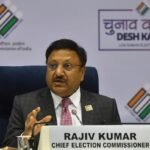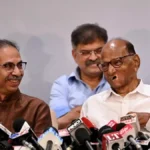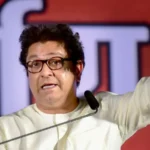As the state gets closer to the assembly elections that are planned for later this year, Maharashtra is now navigating a challenging political environment. A multitude of disputes, coalitions, and public opinion are permeating the political atmosphere and influencing the electoral narrative.
Political Structure and Principal Players
There are many obstacles in the way of the ruling Maha Vikas Aghadi (MVA), which is made up of the Indian National Congress, Nationalist Congress Party (NCP), and Shiv Sena (UBT). Their efficiency and unity have been called into question by internal struggle and arguments among the leadership. Recent actions by Ajit Pawar, including as his attempts to strengthen his position within the NCP, have spurred discussions about the party’s future and its place in the MVA alliance. His actions have been interpreted as a potential danger to the stability of the alliance as well as a calculated move to bolster his position[1].
The Bharatiya Janata Party (BJP), the opposition, is stepping up its campaigning in an attempt to take advantage of voters’ dissatisfaction with matters of governance. The BJP’s approach involves drawing attention to shortcomings in law enforcement, infrastructure development, and public services, especially in metropolitan cities like Pune and Mumbai. This strategy aims to make the BJP seem like a strong alternative to the incumbent administration by appealing to the resentment of the electorate[2].
Election-related Planning and Public Attitude
Political parties are stepping up their outreach as the elections get closer. The MVA is emphasising its accomplishments over the last few years, which include projects related to infrastructure, education, and health care. But these initiatives’ efficacy is being put to the test against the backdrop of growing public discontent, especially with reference to financial difficulties and escalating living expenses[1][2].
Activating the grassroots is essential in this election cycle. Social media and community involvement are being used by political parties to engage voters, particularly the younger generation. Particularly the BJP has been successful in disseminating its message and refuting false narratives from the opposition by using digital media.
Important Concerns at Hand
As the elections draw near, a few major themes are dictating Maharashtra’s political discourse:
1. Economic Recovery: Voters’ #1 concern is still how the COVID-19 outbreak will affect the economy. With promises of financial help for small businesses and employment production, the parties are debating measures for economic recovery and job development.
2. Infrastructure Development: Voters are interested in knowing how political parties intend to close the current gaps in public services, housing, and transportation, given the ongoing infrastructure projects and urban development plans.
3. Law and Order: Talks about the efficacy of law enforcement have been spurred by recent criminal episodes and worries about public safety. These problems are being used by the opposition to cast doubt on the government’s capacity to uphold law and order.
4. Environmental Concerns: Concerns about environmental deterioration and climate change are also becoming more popular, particularly among younger people. It is requested of political parties to outline specific policies to deal with these issues.
Final Thoughts
The political environment of Maharashtra is characterised by a blend of popular anger, strategic alliances, and important concerns that will influence voter choices as the state prepares for the assembly elections. The result of the elections will be largely dependent on the MVA’s capacity to remain together in the face of internal strife and the BJP’s attempts to establish itself as a respectable rival. To win a mandate in this politically charged climate, both coalitions will need to successfully address the voters’ urgent issues. The next several weeks will be crucial as the campaigns heat up and the public’s opinions solidify ahead of the polls.








